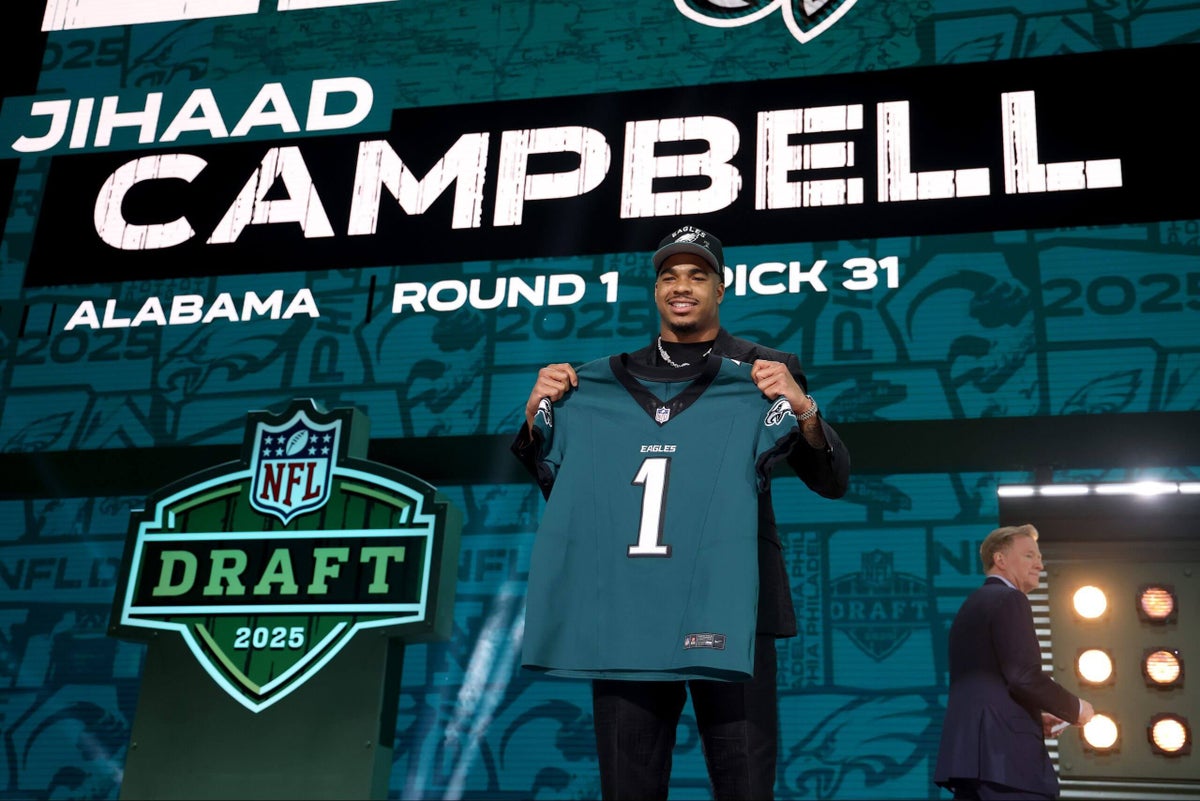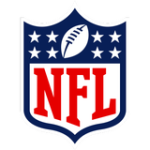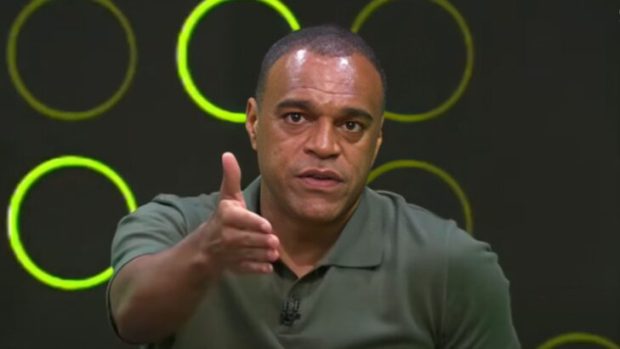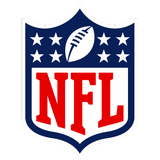

PHILADELPHIA — The Philadelphia Eagles finished the 2025 NFL Draft with 10 selections. As reigning Super Bowl champions, they operated from the back end of the rounds. The positioning forced the Eagles’ war room to be more strategic. At one time, aggressive. More often, conservative. General manager Howie Roseman executed five draft-day trades in a series of moves that yielded one of the largest draft classes of his tenure. He also acquired a fifth-round selection for a 2026 arsenal of picks that now has a total of 12.
Advertisement
Roseman, his personnel department and the Eagles coaching staff will now start chasing down undrafted free agents to sign. Philadelphia’s offseason roster will continue to take shape as the Eagles prepare for voluntary OTAs, which begin May 27. Here’s a breakdown of the key takeaways for the Eagles from the draft.
Best value pick
The Eagles believe they acquired Jihaad Campbell at a considerable bargain. Roseman said the Alabama linebacker was a “top-10 player” on their draft board. The trade-happy executive confirmed he explored trading into the early 20s to select Campbell. Such a leap would’ve required a larger cost than the No. 164 pick the Eagles gave the Kansas City Chiefs in a one-spot move to choose Campbell at No. 31.
Health concerns prompted Campbell’s fall. He played in the ReliaQuest Bowl, but sat out the second half because of a slight labrum tear in his left shoulder. He underwent surgery in March but still participated in the running and jumping portions of the scouting combine. The Eagles accepted both the risk of Campbell’s injury history and the uncertainty of just when he will be available for football activities.
The payoff could be substantial. Campbell’s size (6-2, 235), speed (19.45 mph shuffle sprint) and physicality make him one of the most athletic defenders in the draft. His unique blend of traits caught defensive coordinator Vic Fangio’s intrigue, and Roseman noted the creative ways the Eagles can deploy him. It’d be presumptuous to say Campbell’s ceiling is to become Philadelphia’s version of Micah Parsons. But if Campbell’s production as a pass rusher gets anywhere close to Parsons’, the Eagles will consider this investment to be worth it.
Most surprising pick
That the Eagles spent a Day 3 pick on a Syracuse quarterback Kyle McCord isn’t altogether surprising. But sixth-round picks only have to be nominally interesting to raise eyebrows. The Eagles historically value depth in the room, which took a hit after they traded Kenny Pickett to the Browns. That trade partly netted Dorian Thompson-Robinson, who has struggled in two seasons (1 TD, 10 INTs). Adding competition behind Tanner McKee, Philadelphia’s clear QB2, strengthens the room.
Advertisement
McCord’s selection at No. 181 befits the role he’s entering. The Eagles drafted McKee at No. 188 in 2023. Consider McCord another addition to the “quarterback factory” — a term Roseman coined (however controversially) after spending a second-round pick on Jalen Hurts in 2020 with Carson Wentz still under contract. These days, the pecking order is clear. Hurts is the reigning Super Bowl LIX MVP. McKee earned the QB2 role after completing 30-of-45 passes for 323 yards and four touchdowns in two late-season appearances. McCord will battle DTR for the QB3 spot.
Biggest question mark
The Eagles didn’t draft anyone with experience playing offensive guard in college despite having a vacancy at right guard. Instead, they spent No. 181 on Drew Kendall, who’d only played center at Boston College, and Nos. 181 and 191 on tackle-only prospects Myles Hinton (Michigan) and Cameron Williams (Texas), respectively. Hinton and Williams can compete with Darian Kinnard for the swing tackle role that was left vacant after Fred Johnson’s departure in free agency. Kendall supplies depth at center that the Eagles didn’t have in 2024. Starting left guard Landon Dickerson replaced Cam Jurgens when Jurgens was dealing with a back injury during the playoffs. The Eagles made Jurgens the NFL’s second-highest-paid center with a four-year, $68 million contract extension; but it’s wise for teams to acquire depth for contingency plans.
Still, the Eagles stood to add an interior lineman who could play guard. Kendall said he believes he can play guard in the NFL despite his lack of experience. His father, Pete, played 13 seasons for the Seahawks, Cardinals, Jets and Redskins — the vast majority of those years at left guard. Eagles offensive line coach Jeff Stoutland often cross-trains his players. Perhaps he cultivates in Kendall what hasn’t yet been seen on film.
Remaining needs
Notably absent from the Eagles’ draft listing: tight end. It’s yet uncertain whether that’s a reflection of Philadelphia’s plans with Dallas Goedert, the organization’s opinion of the tight ends in this year’s draft class, the difficulty for them to be in range of the tight ends they wanted, or a combination of all three factors. Goedert, 30, is entering the final season of his contract and is scheduled to be the team’s fifth-highest cap hit in 2025 ($11.7 million), according to Over the Cap. If the Eagles intend to move on from Goedert in yet another cash-saving transaction, their efforts to replace him just got more complicated.
Cameron Latu, who has yet to record a snap, is the only Eagles tight end who is under contract beyond the 2025 season. Grant Calcaterra, Philly’s No. 2 TE, is entering the final year of his rookie deal and showed relative promise last season with a career-high 24 catches, 298 yards and one touchdown reception. But the Eagles may be faced with either absorbing Goedert’s cap hit or restructuring his contract as they did with Josh Sweat last year. Or perhaps the summer trade market will provide what the draft could not. Goedert has been productive when healthy. His availability might not match the value of his contract, but it might be more valuable than what the Eagles would receive in a trade or absorb in a dead-money hit by releasing him.
Advertisement
Post-draft outlook
The Eagles needed volume in the draft to acquire rookie contracts that could help bring balance to a budget that needed to cut back on cash spending after ranking third in that category in 2024. They ended the weekend with 10 draft picks — all chosen without a selection in the seventh and final round. Roseman has now surpassed the 10-pick threshold four times since he was first named general manager in 2010 (2010, 2011, 2020 and 2025). Philly’s four sixth-round picks in this cycle were the most in Roseman’s tenure.
Roseman’s five draft-day trades included trading back four times. The Eagles entered the weekend without any sixth-round picks. The trades supplied them with four. They spent each one on a player. The players available in the sixth round appear to have matched up more with the value the Eagles placed on them than those in the fifth round. That could also speak to the Eagles’ overall view of the strength of this year’s draft class. But the Eagles have a long history of hitting on late-round picks. Johnny Wilson (2024), Tanner McKee (2023), Grant Calcaterra (2022) and Jason Kelce (2011) were all sixth-round picks. Moro Ojomo (2023), Jordan Mailata (2018) and Beau Allen (2014) were all seventh-rounders. Perhaps the Eagles will have again acquired future starters and key contributors with their late-round picks.
(Photo of Jihaad Campbell: Stacy Revere / Getty Images)
This news was originally published on this post .












Be the first to leave a comment